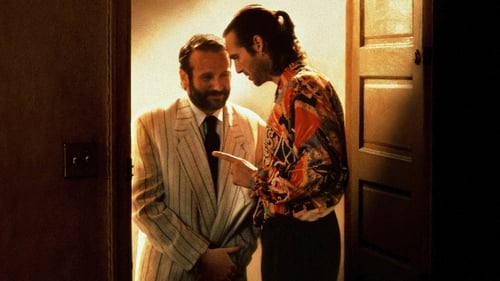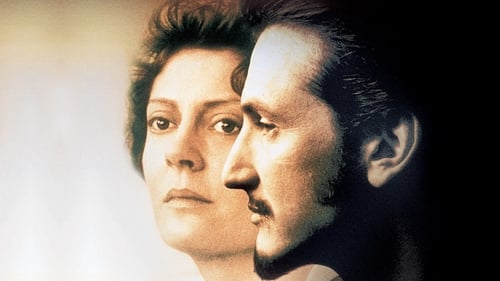AA-PROXIMA-SUN (2022)
What Is It That You Like?
ジャンル : ファンタジー, ドラマ
上映時間 : 5分
演出 : Fernando Sá Machado
シノプシス
A girl approaches a divine entity that comes to the world in the form of a yellow umbrella, and ends up discovering her true self.

1863年、南北戦争の激戦地。その自殺的行為から英雄となり、殊勲者として勤務地を選ぶ権利を与えられたジョン・ダンバーは、かねてより興味を持っていたダコダにあるセッジウィック砦を望んだ。彼は、愛馬シスコと野性の狼と共に、不思議に満ち足りた日々を送り始める。そんなある日、ふとした事からインディアンたちと交流を深めるようなったダンバーは、やがて、インディアンに育てられた白人女性と恋に落ちる。

奇才テリー・ギリアムが描く、ファンタスティック・コメディ。過激なトークで時代の寵児として君臨したスーパーDJのジャック・ルーカスは、放送中に発した不用意な言動がもとで忌まわしい事件を誘発し、奈落の底へ転落する。また、教授だったというヘンリーは、3年前のある悲劇的事件に見舞われてから人が変わり、過去を捨ててホームレスとなった。共に精神に深い痛手を負った男達は、ニューヨークの底辺で出会い、奇妙な友情で結ばれる……。

南北戦争時代のアメリカ。北軍の士官として参軍したネイサン・オールグレン大尉は南軍やインディアンと戦いの中、無関係のインディアン部族を攻撃し、子供たちを撃ち、良心の呵責に悩まされ酒浸りになる。日本の実業家の大村はバグリー大佐を介し軍隊の教授職として雇いに来ていた。当時の日本は明治維新で近代国家建設のために急速な近代的軍備増強が必要だった。多額の報酬に魅せられたオールグレンは、僚友ガントとともに日本に渡り、軍隊訓練を指揮する。

ニュー・オリンズ。“希望の家”で働くシスター・ヘレンは死刑囚マシューからの手紙を受け取り、彼と接見する事になった。マシューは相棒が無期懲役なのに自分が死刑になる事に憤りを感じている。ヘレンは特赦を得ようと弁護士の協力を仰ぐが嘆願は却下され、残るは州知事への直訴だけとなった。被害者の両親たちからは敵と見なされ非難を浴びるヘレン。しかし毎日、アドバイザーとしてマシューと会い話をしていくうちに二人の心は繋がっていく。が、やがて処刑の日が訪れた……。

Starting in the late 1930s, illustrator and experimental animator Douglass Crockwell created a series of short abstract animated films at his home in Glen Falls, New York. The films offered Crockwell a chance to experiment with various unorthodox animation techniques such as adding and removing non-drying paint on glass frame-by-frame, squeezing paint between two sheets of glass, and finger painting. The individual films created over a nine-year period were then stitched together for presentation, forming a nonsensical relationship that only highlights the abstract qualities of the images. —Kansas City Electronic Music and Arts Alliance

"Single Frame sequences of TV or film images, with periodic distortions of the image. The images are airplanes, women men interspersed with pictures of texts like: 'silence, genius at work' and 'ich liebe dich.' The end credit is 'Television décollage, Cologne, 1963."

In an endless loop, unexposed film runs through the projector. The resulting projected image shows a surface illuminated by a bright light, occasionally altered by the appearance of scratches and dust particles in the surface of the damaged film material. This a film which depicts only its own material qualities; An "anti-film", meant to encourage viewers to focus on the lack of concrete images.

In a lifeless urban landscape where time itself has stopped its crawl, a mad ballet is commencing and a newly hatched butterfly is about to die.

Everyday Is Like Sunday is a comedy/drama aiming the lens at post-collegiate characters stuck between their imminently-ending youth and impending adulthood. The film follows Mark, Jason, and Flora, as they realistically attempt to pull themselves out of economic and emotional doldrums.

In 1944 Lye moved to New York City, initially to direct for the documentary newsreel The March of Time. He settled in the West Village, where he mixed with artists who later became the Abstract Expressionists, encouraged New York’s emerging filmmakers such as Francis Lee, taught with Hans Richter, and assisted Ian Hugo on Bells of Atlantis. Color Cry was based on a development of the “rayogram” or “shadow cast” process, using fabrics as stencils, with the images synchronized to a haunting blues song by Sonny Terry, which Lye imagined to be the anguished cry of a runaway slave. —Harvard Film Archive

Short experimental animation.

A synthesized video environment.

コラムニスト、アイクはある男の話をもとに1本の記事を書き上げる。それは何度も婚約を繰り返しては、挙式の最中に花婿を置き去りにして逃げ出すマギーという女の話。彼女を”男を食い物にする女”と切り捨てたその痛烈な記事は大反響を呼んだ。ところが、当のマギーが新聞社に抗議の手紙を送りつけたために、アイクのコラムは打ち切られてしまう。ジャーナリストの意地を賭けたアイクは彼女の住む町に乗り込み、折しも4度目の結婚式を控えるマギーの取材を開始するが…。

A half-striped zebra is blamed for the drought and leaves his herd in search of his missing stripes. He is joined on his quest by an overprotective wildebeest and a flamboyant ostrich; they defeat the tyrannical leopard and save his herd.

After a fight with his wife, who's leaving him, Dan's day is getting worse by the minute. He calls an old friend for a night of binge drinking and intoxication. They start a cathartic ride through the city's underbelly.

An essay around the streets, as an homage to Fernando Pessoa

Everyday Is Like Sunday is a comedy/drama aiming the lens at post-collegiate characters stuck between their imminently-ending youth and impending adulthood. The film follows Mark, Jason, and Flora, as they realistically attempt to pull themselves out of economic and emotional doldrums.

Starting in the late 1930s, illustrator and experimental animator Douglass Crockwell created a series of short abstract animated films at his home in Glen Falls, New York. The films offered Crockwell a chance to experiment with various unorthodox animation techniques such as adding and removing non-drying paint on glass frame-by-frame, squeezing paint between two sheets of glass, and finger painting. The individual films created over a nine-year period were then stitched together for presentation, forming a nonsensical relationship that only highlights the abstract qualities of the images. —Kansas City Electronic Music and Arts Alliance

In 1944 Lye moved to New York City, initially to direct for the documentary newsreel The March of Time. He settled in the West Village, where he mixed with artists who later became the Abstract Expressionists, encouraged New York’s emerging filmmakers such as Francis Lee, taught with Hans Richter, and assisted Ian Hugo on Bells of Atlantis. Color Cry was based on a development of the “rayogram” or “shadow cast” process, using fabrics as stencils, with the images synchronized to a haunting blues song by Sonny Terry, which Lye imagined to be the anguished cry of a runaway slave. —Harvard Film Archive

ĀTMAN is a visual tour-de-force based on the idea of the subject at the centre of the circle created by camera positions (480 such positions). Shooting frame-by-frame the filmmaker set up an increasingly rapid circular motion. ĀTMAN is an early Buddhist deity often connected with destruction; the Japanese aspect is stressed by the devil mask of Hangan, from the Noh, and by using both Noh music and the general principle of acceleration often associated with Noh drama.










